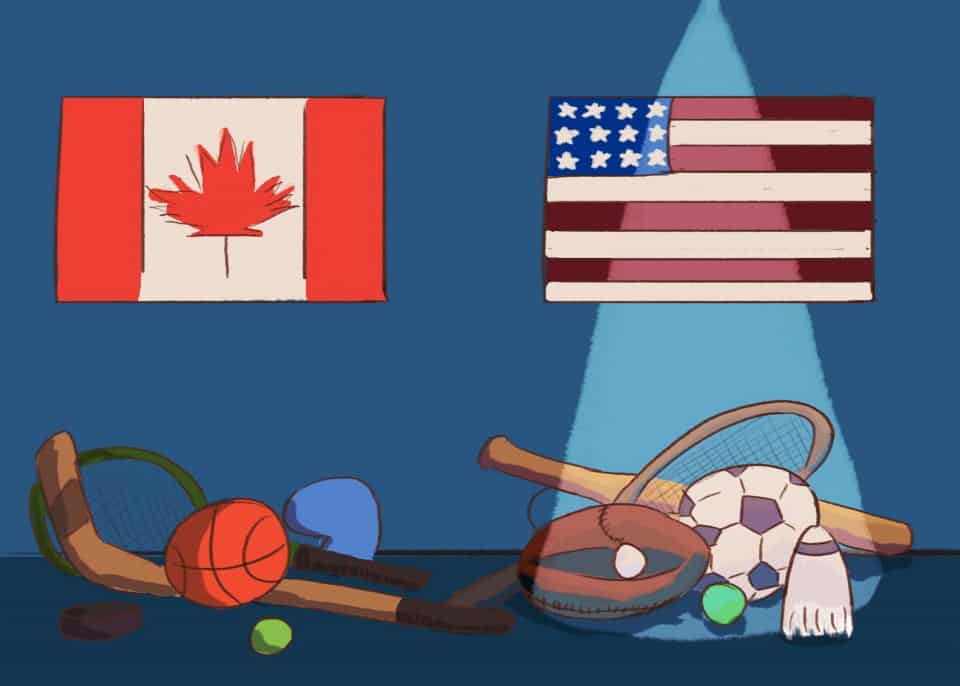March madness, college football, and D1 schools — these terms should all be instantly recognizable to sports fans and enthusiasts across Canada. What all three have in common is that they are synonymous with America’s National Collegiate Athletics Association — more commonly referred to as the NCAA.
The NCAA is the upper echelon of varsity athletics, reportedly pulling in just under one billion dollars in annual revenue in 2014. The triumphs and scandals of NCAA teams frequent US headlines and trickle into Canadian media and sports culture. Millions of Canadians create March madness brackets every year, and there is a constant stream of boosting and coaching scandals appearing north of the border. But why exactly are our newsfeeds flooded with NCAA discussion instead of our own Canadian product?
The amount of coverage dedicated to the closest Canadian equivalent to the NCAA, Canadian Interuniversity Sports (CIS), lacks in content and frequency when compared to the NCAA — in part because of the media structure we currently live in. Small sources can not make much of an impact when reporting on CIS championships when major Canadian news organizations decline to cover the same events as heavily as they do the NCAA. This lack of coverage, when combined with the fact that U of T students — and Canadian university students in general — do not regularly engage with university sport, makes the market for covering the CIS small.
Along with their masses of collegiate fans, the NCAA also boasts a clear financial advantage over the CIS in marketing and advertising. In the US sportswear companies such as Nike, Adidas, and Under Armor sign seven-figure sponsorship deals with colleges to own commercial and apparel rights. If you walk into any of the ‘Big 10’ colleges’ sports stores, you can expect to find jerseys embossed with the number of your favourite player. Because, in US collegiate sport you not only know who the players are, but you actually have a favourite.
Reporting on the Blues’ recent football home opener I was completely unaware of the surnames of the opposing McMaster Marauders. At the same time, like a lot of avid sports fans, I can rattle off the names of the top NCAA football programs in a heartbeat.
Aside from the lack of media coverage, there is also a common narrative that discredits Canadian varsity sport — the CIS lacks worldwide notoriety and does not seem to produce the magnetic star athletes who go on to play professionally.
The sheer amount of programing devoted to the NCAA also outweighs that of the CIS. On Saturdays, from noon till night, any sports fan can find a number of NCAA football games airing on television, but the same cannot be said of the CIS. This disparity however, can also be attributed to the rule differences between American and Canadian football, the same differences that are evident between the CFL and the NFL — due to the lack of knowledge regarding Canada’s rule system, an information divide exists atop a popularity divide.
The sad truth is that there just isn’t a market available for the CIS to rival the well-oiled, better funded, NCAA machine. Superior branding has even casual fans relishing the opportunity to redeem themselves from last spring’s busted bracket in the 2016 March madness tournament.


